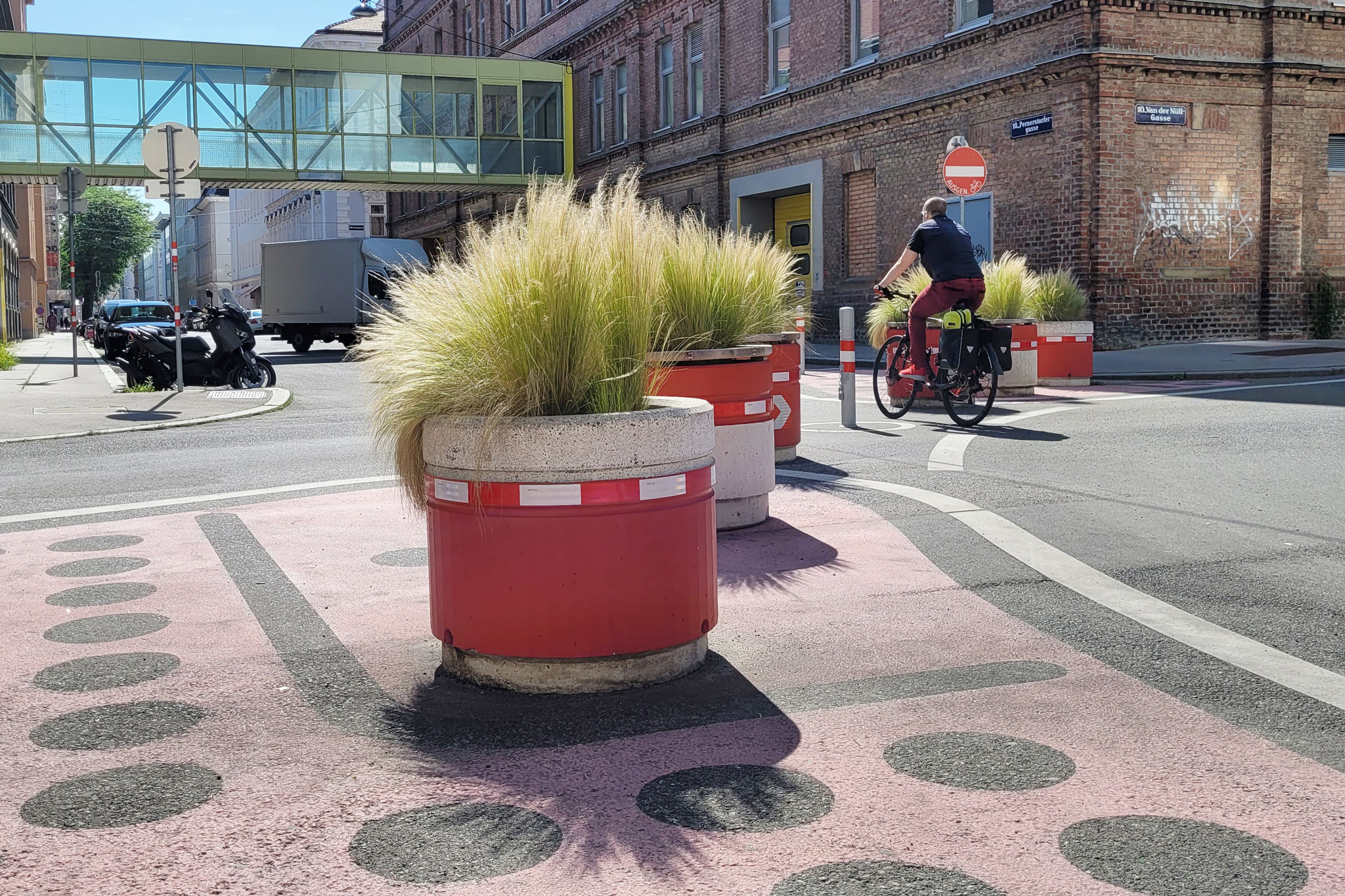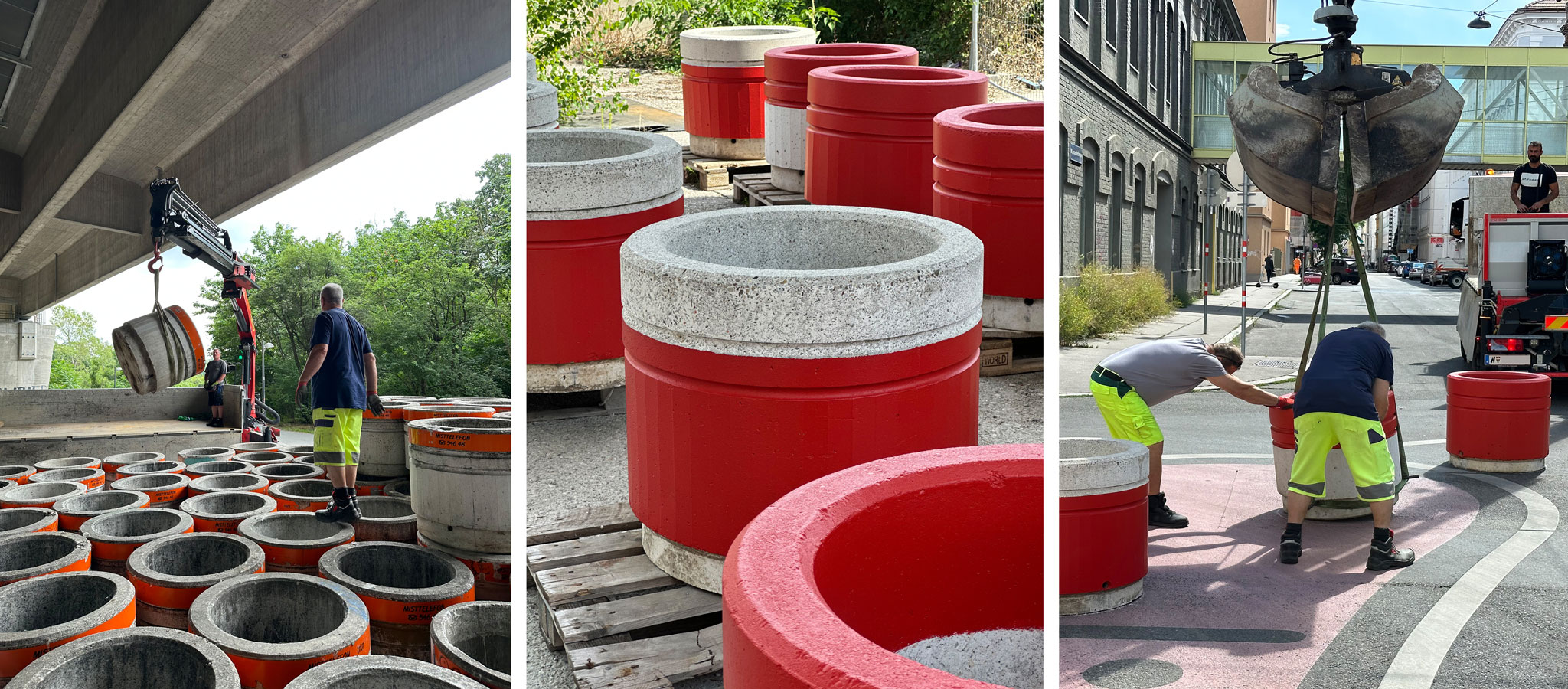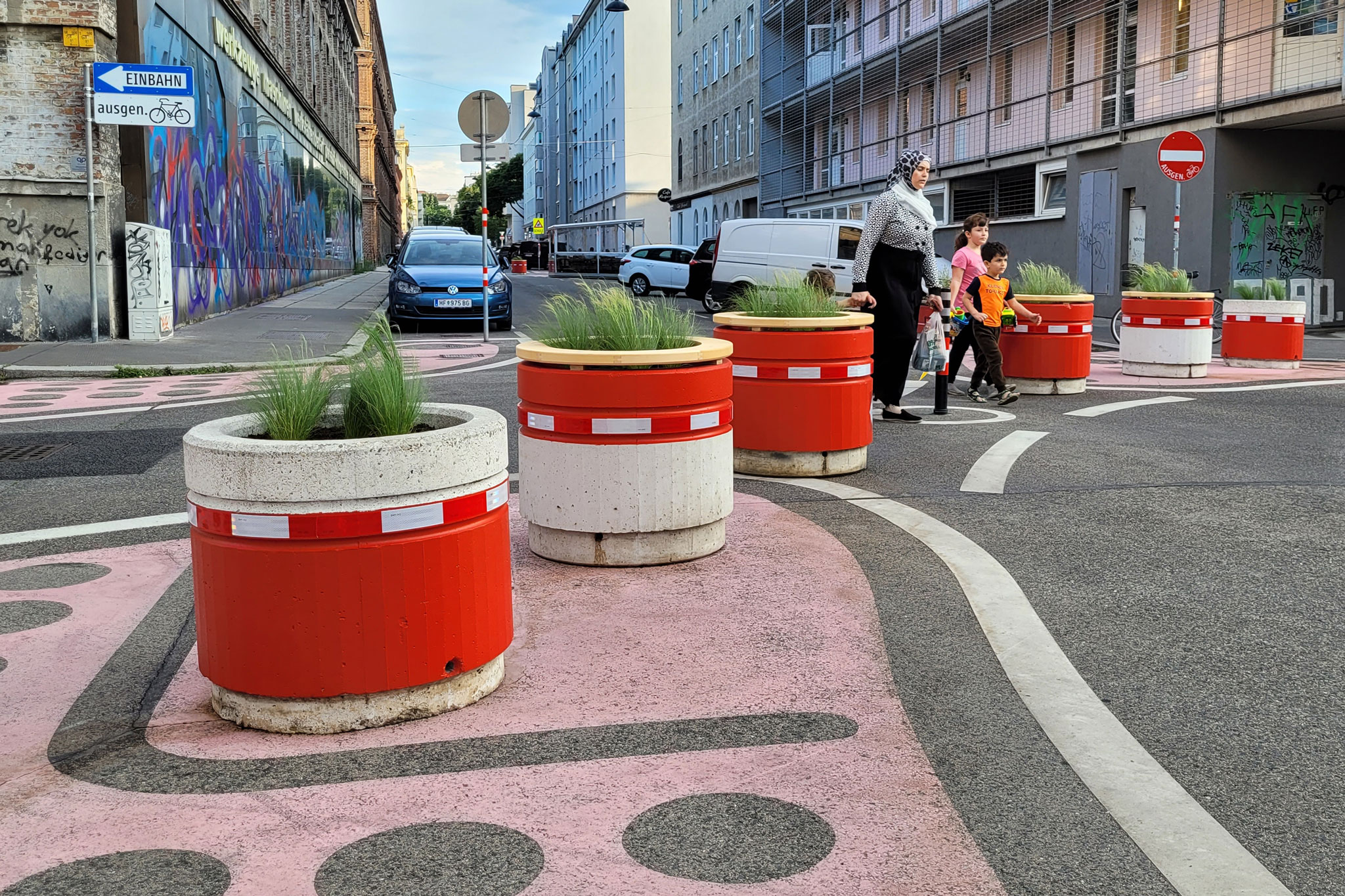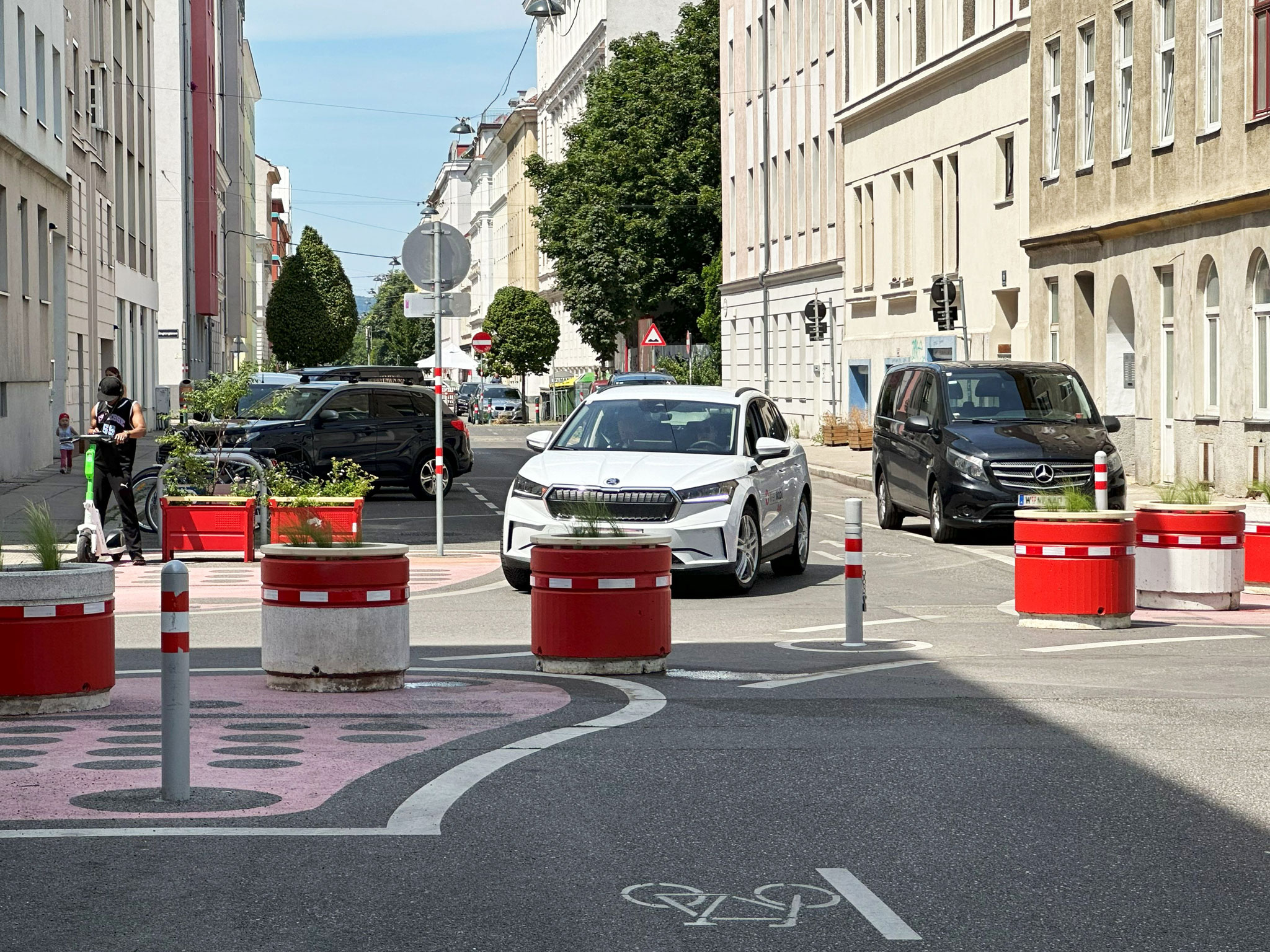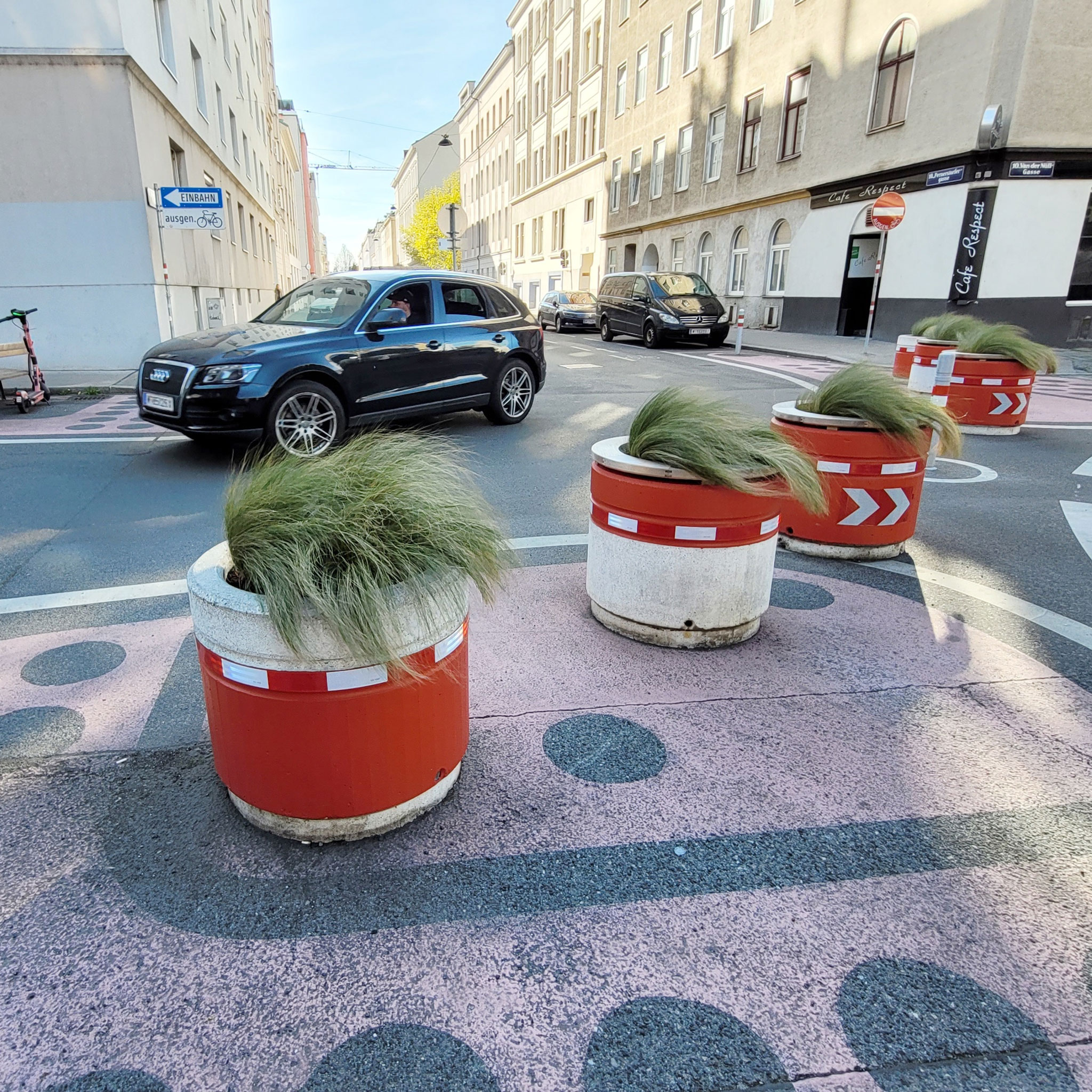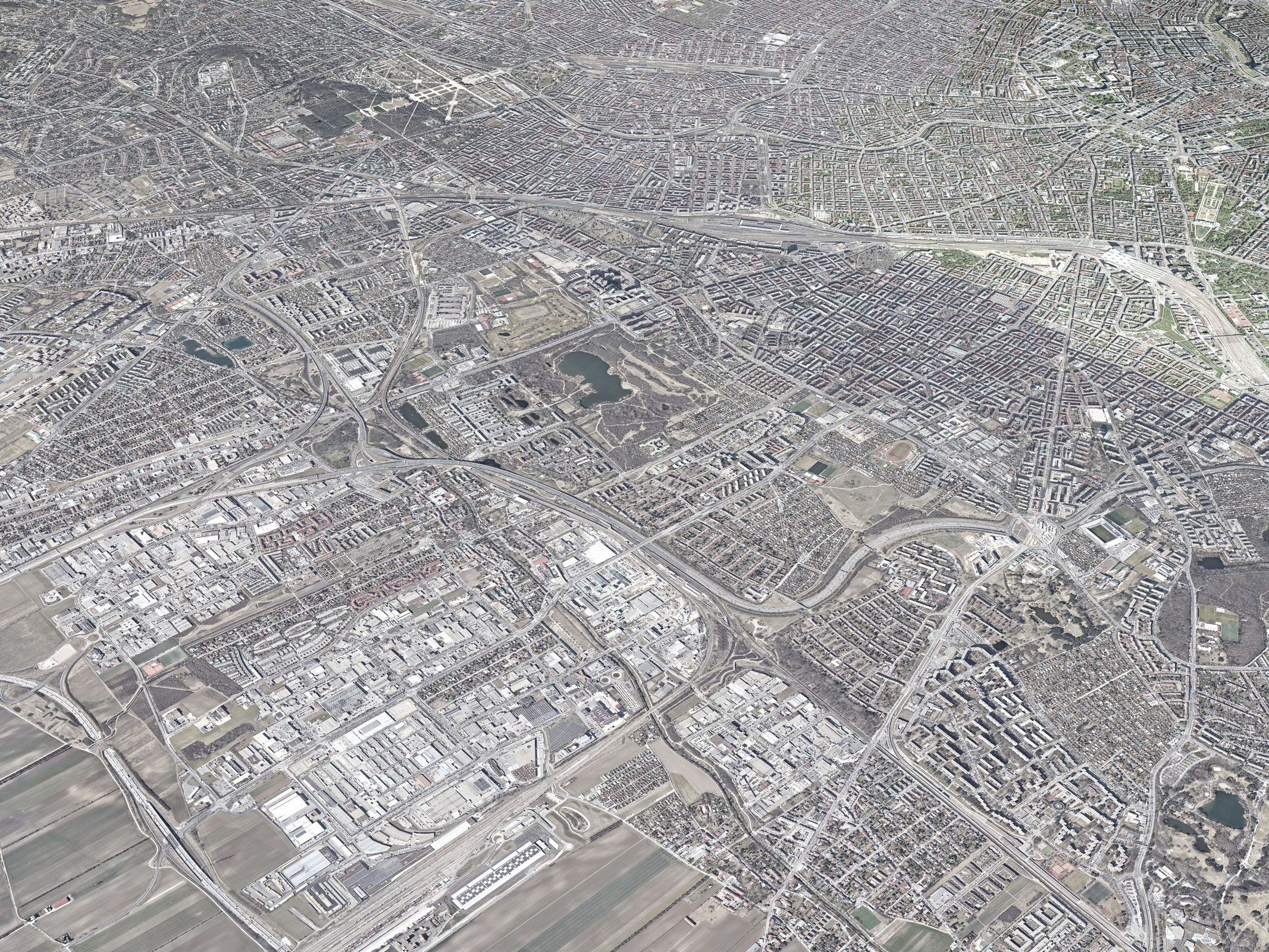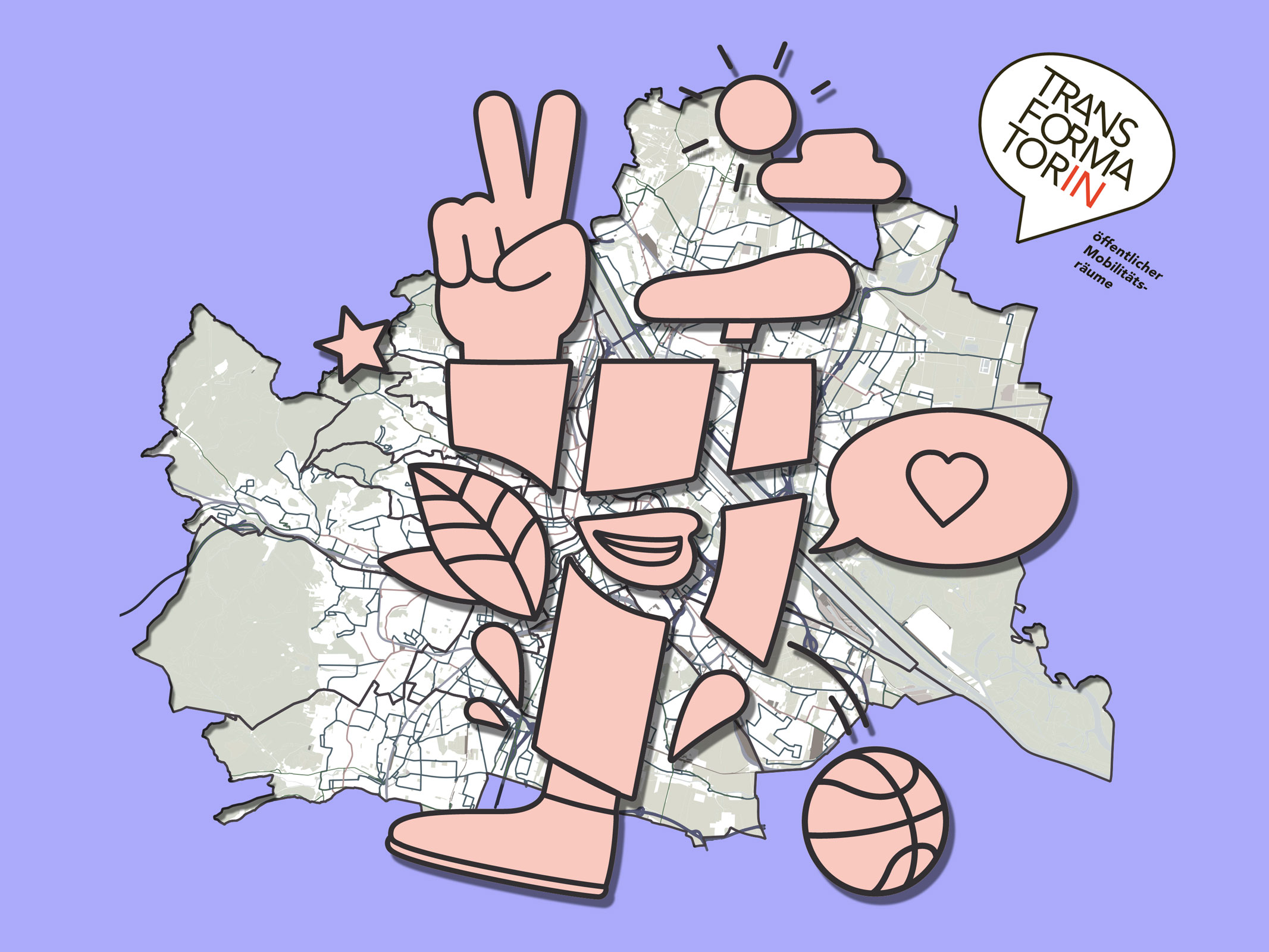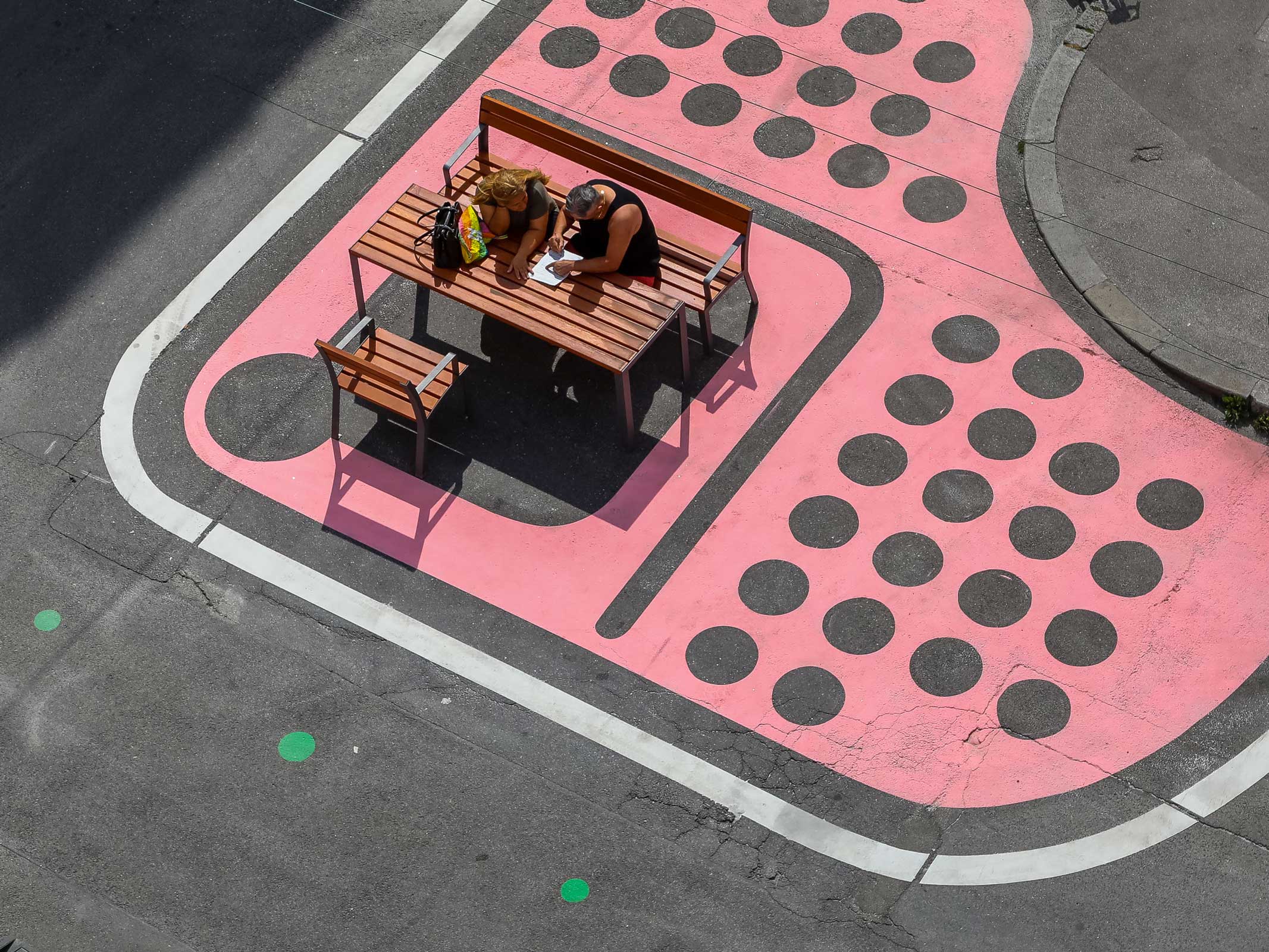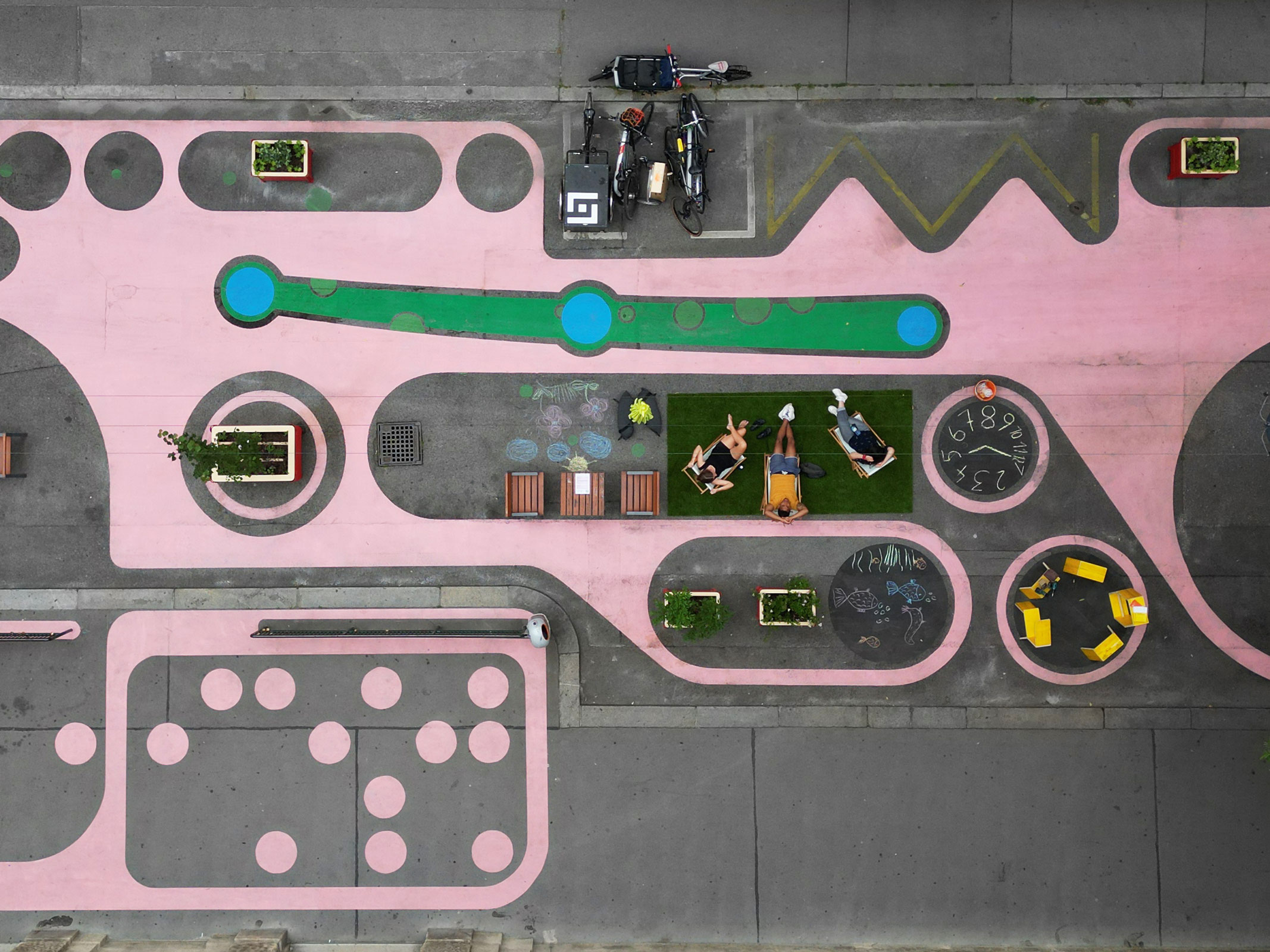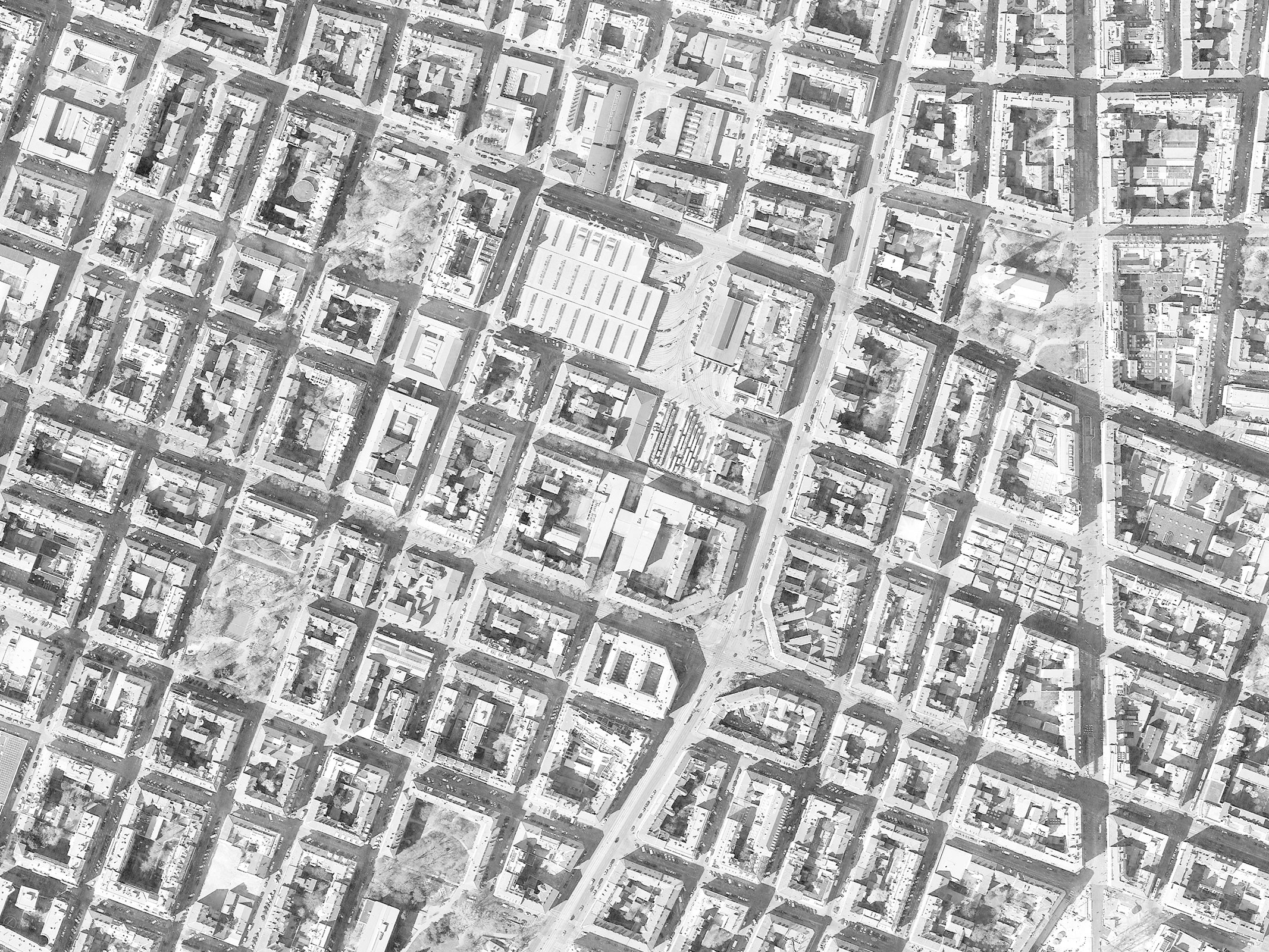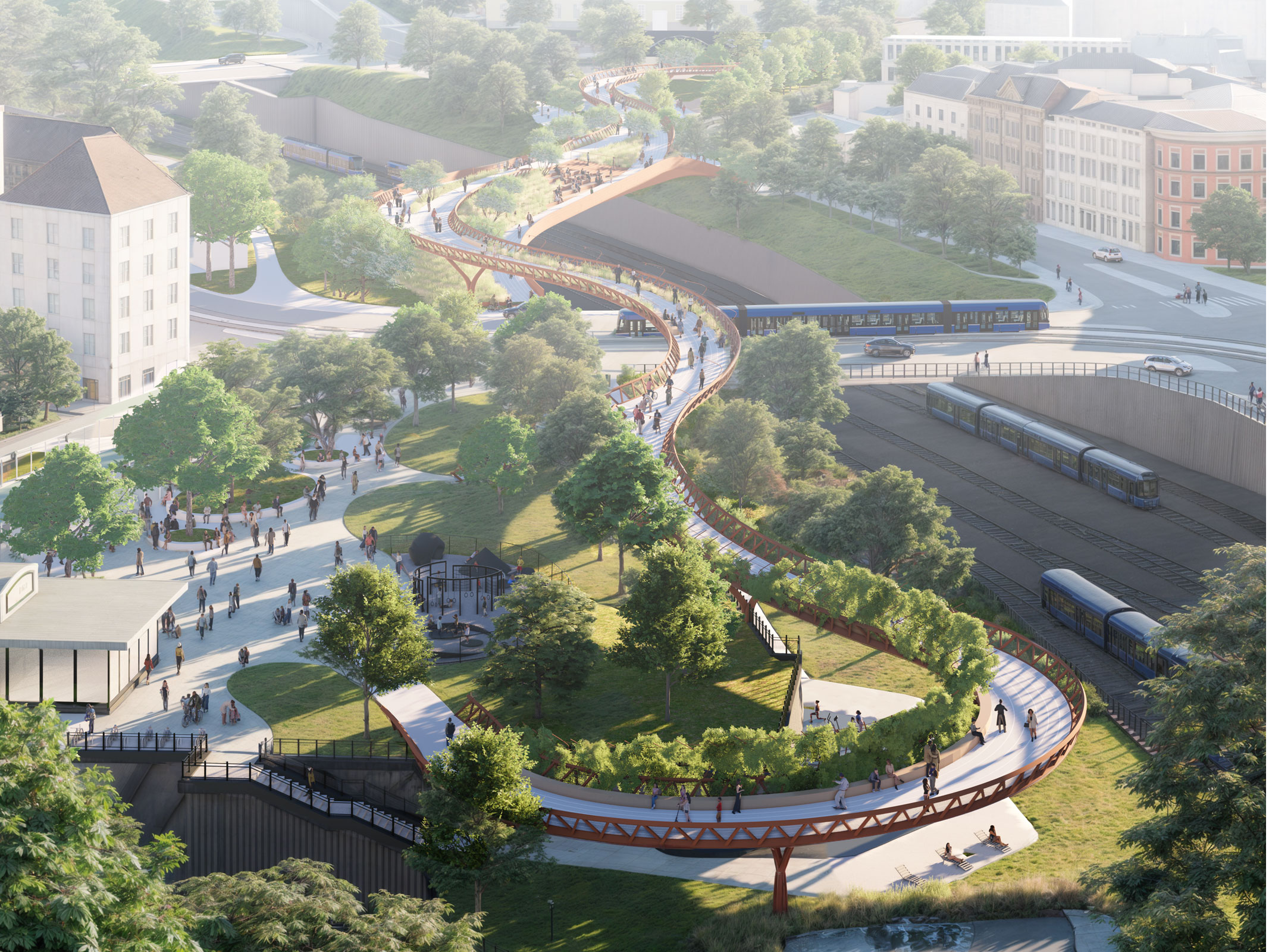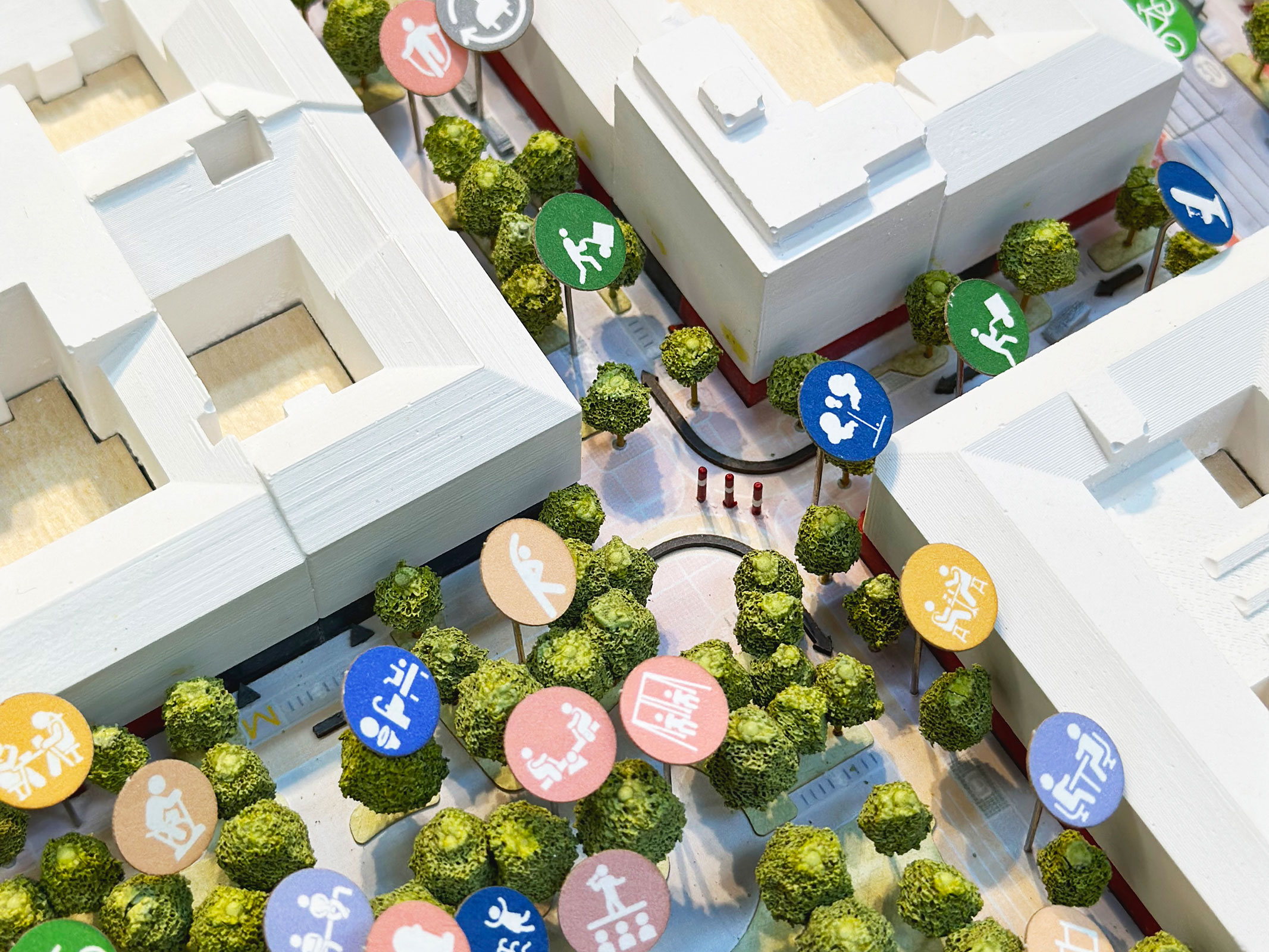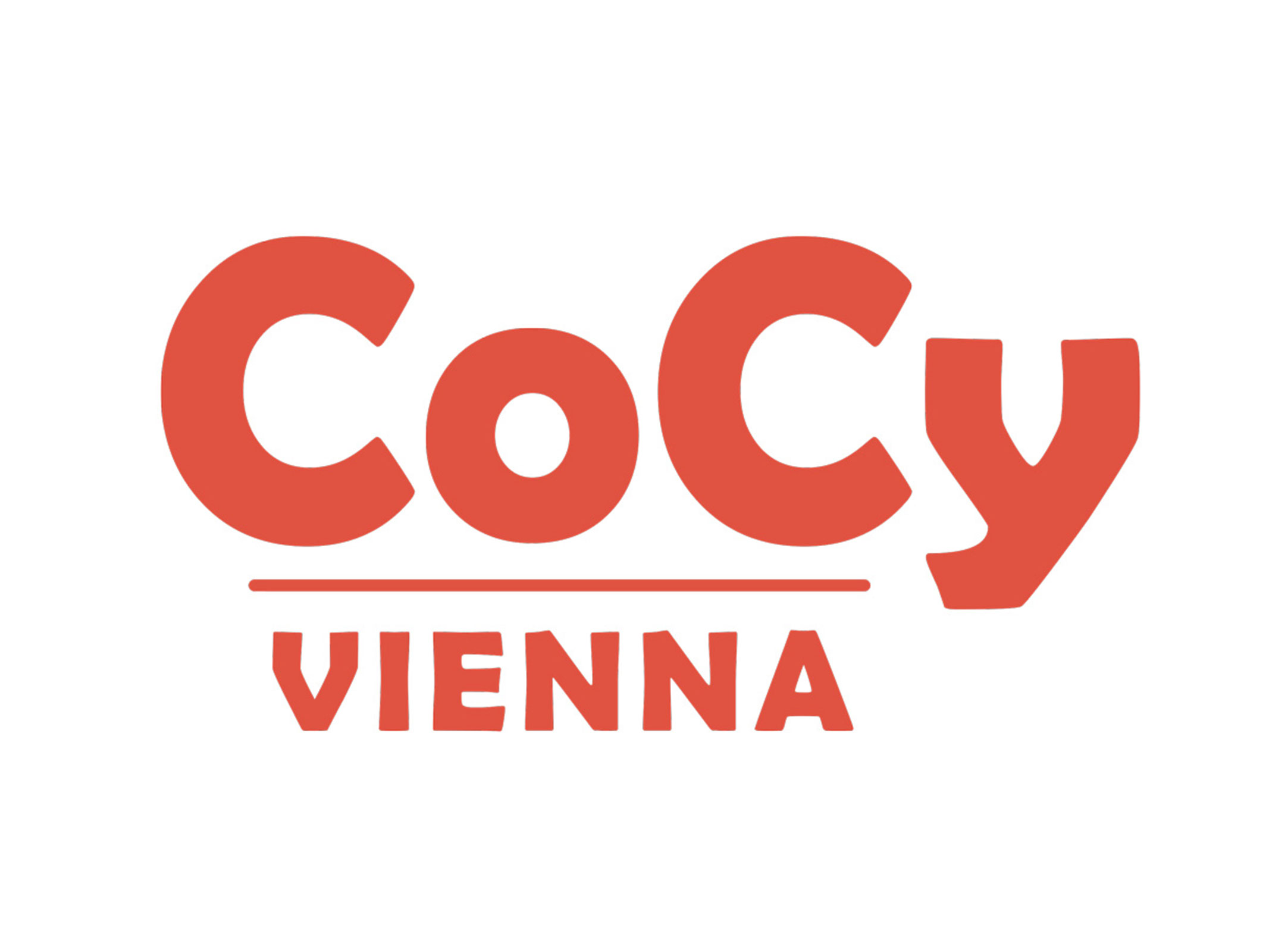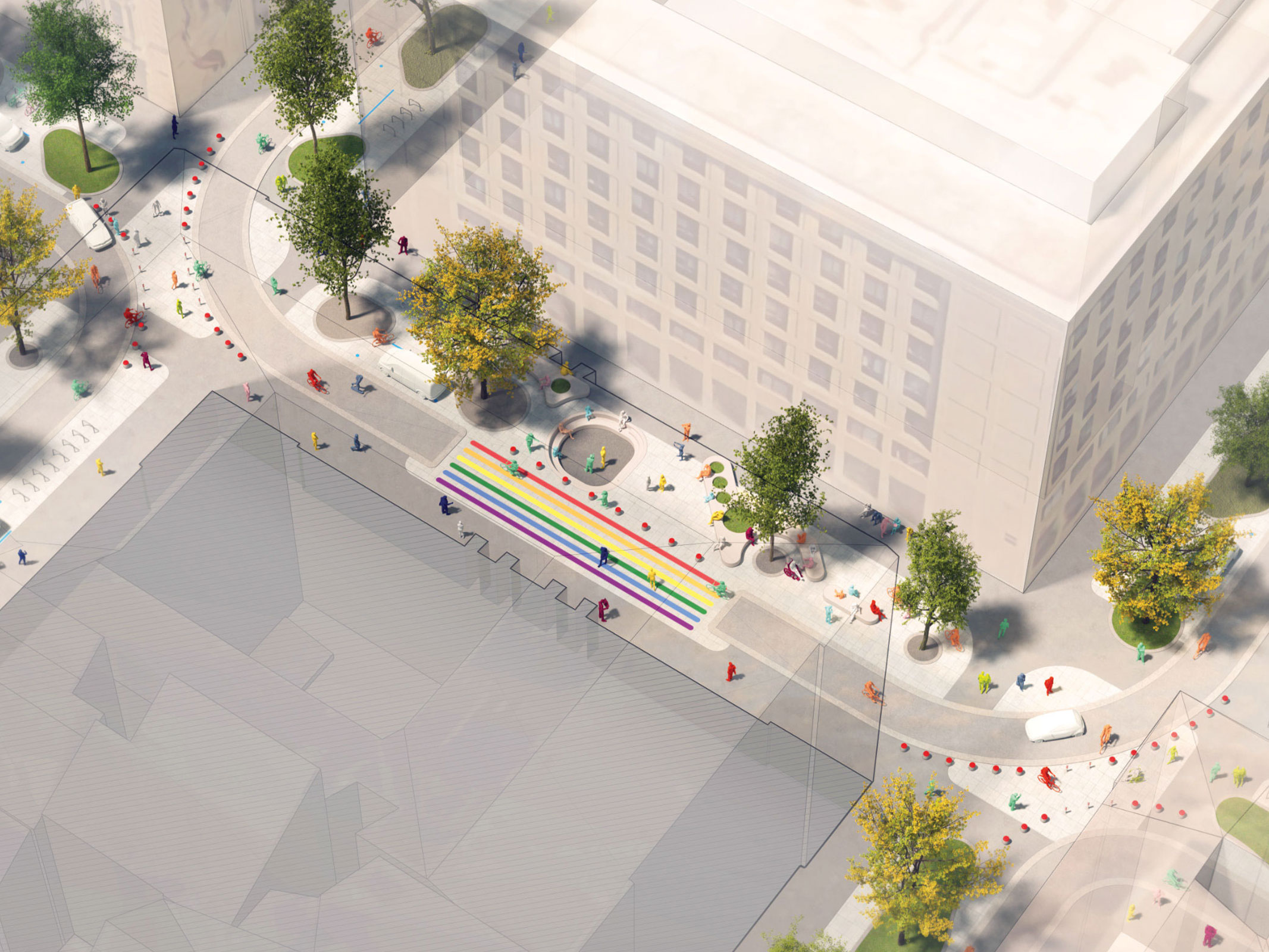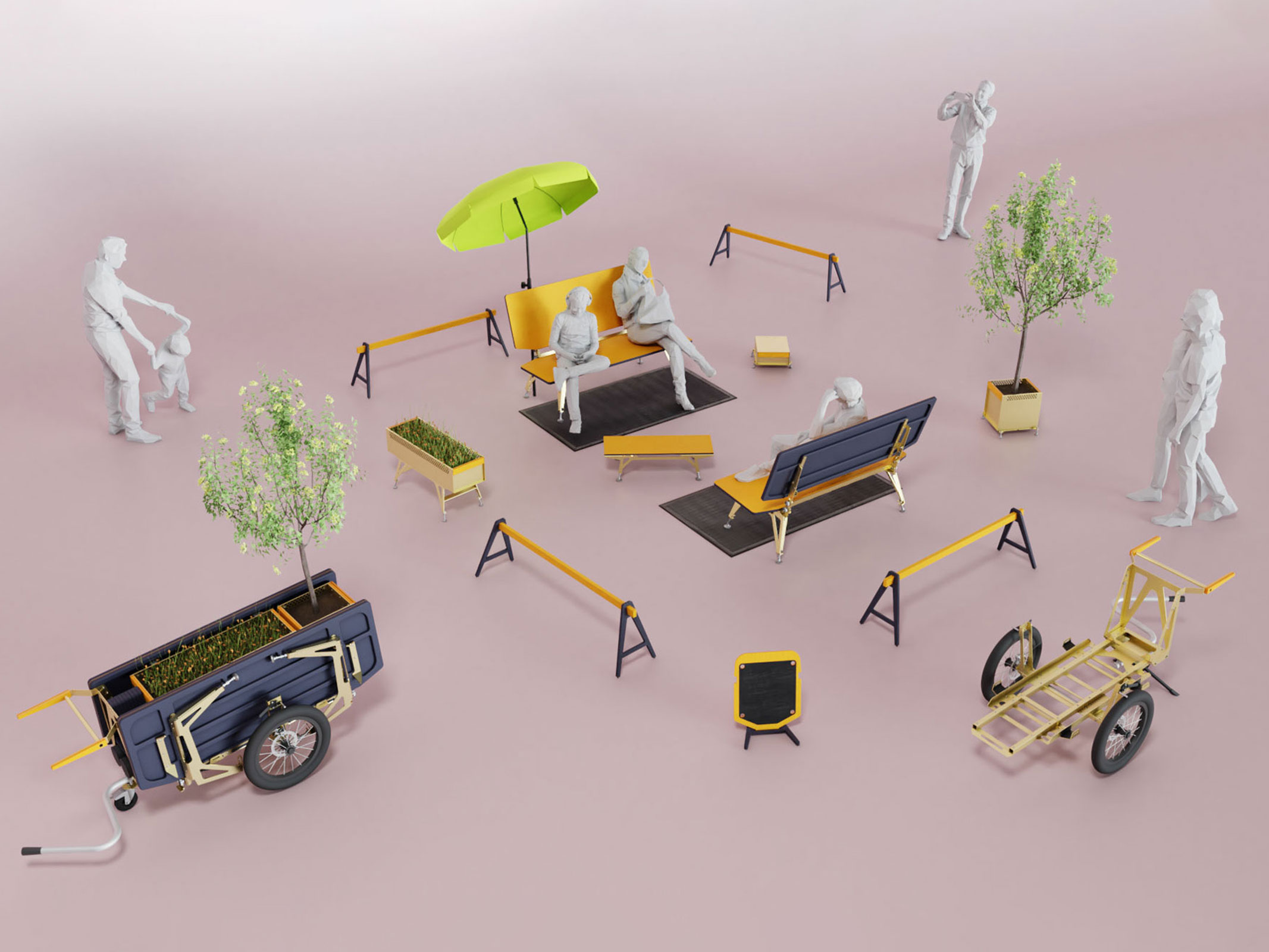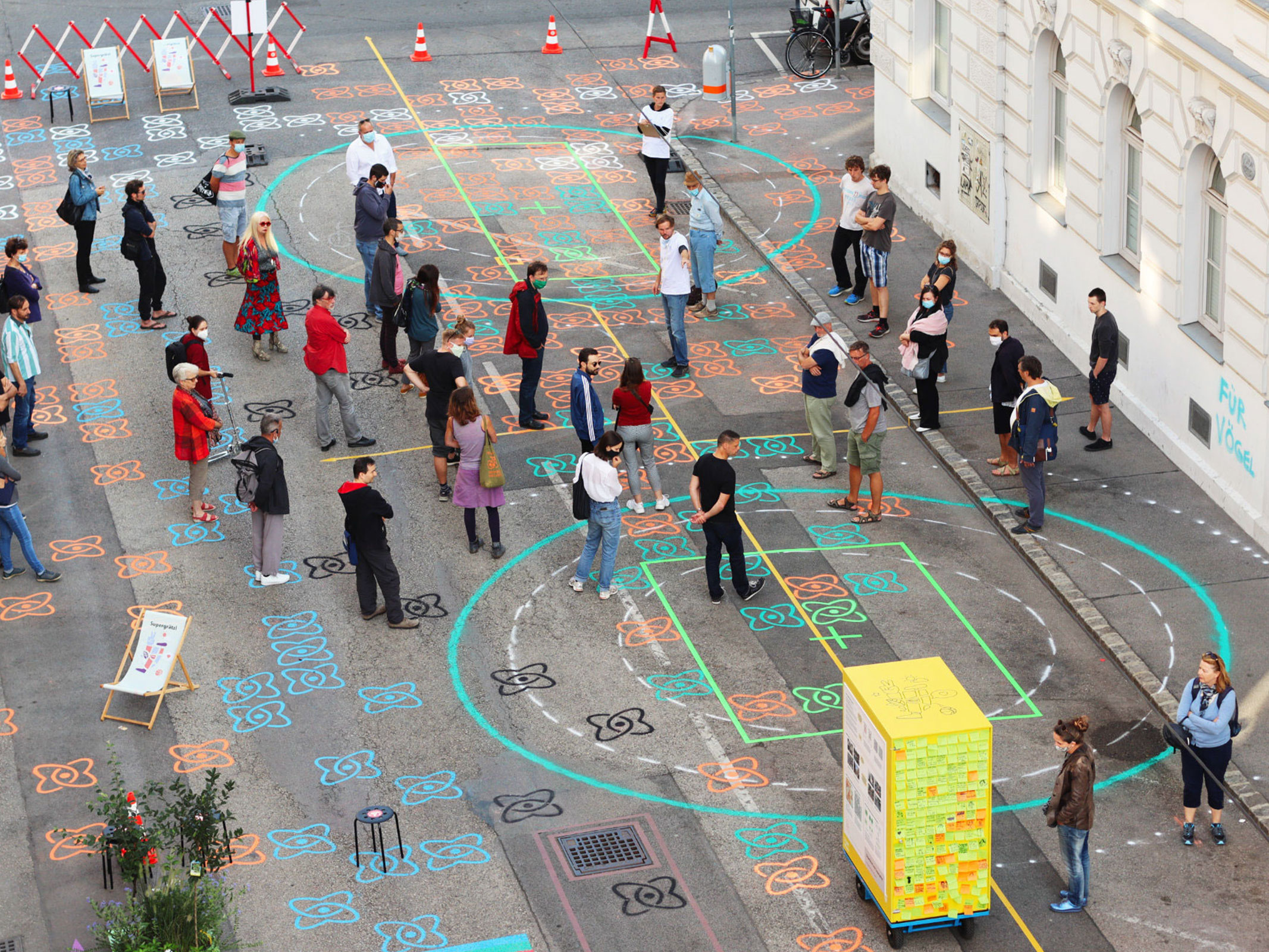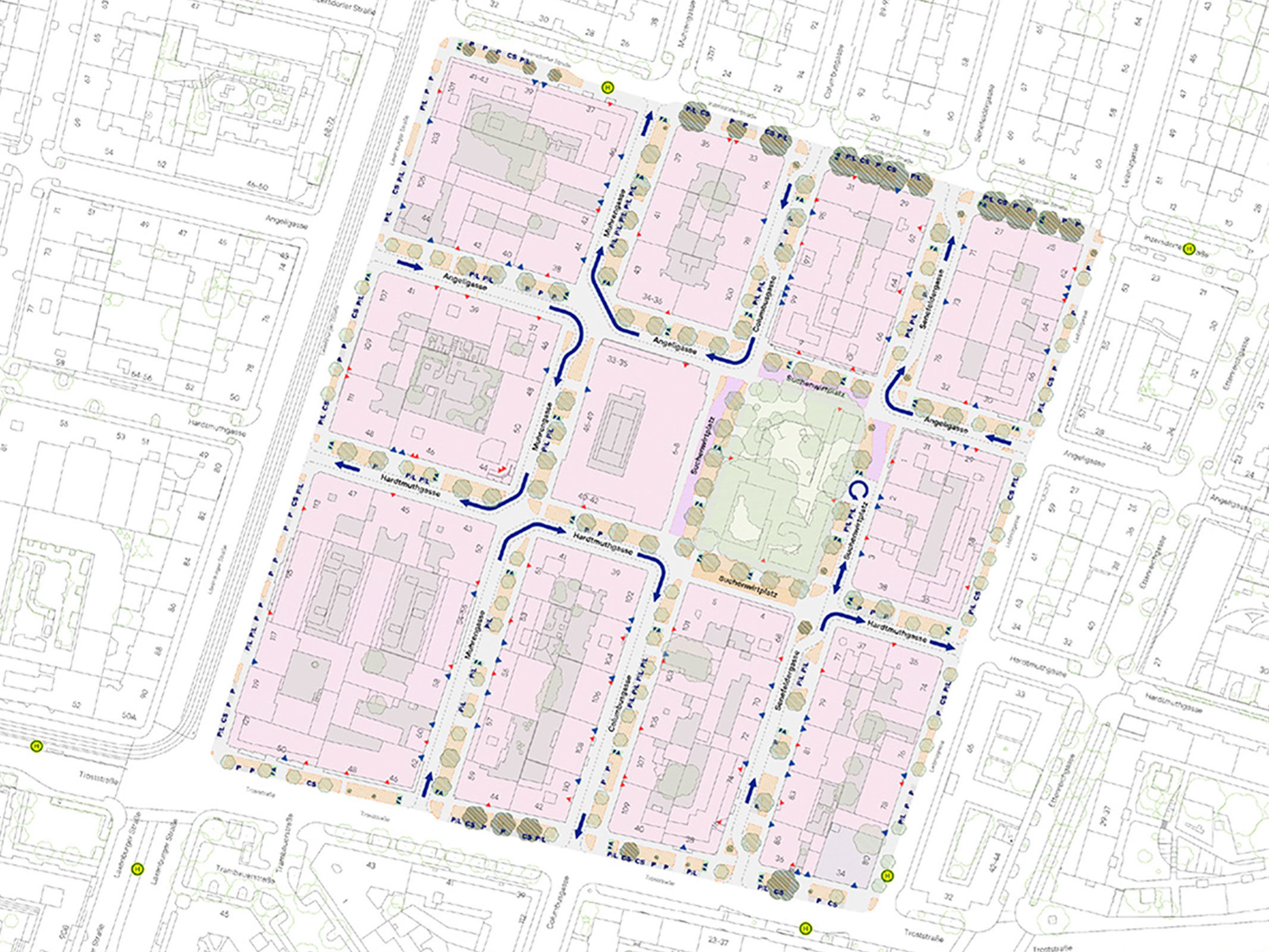In 2023, LAUT was commissioned to improve the diagonal filters in Supergrätzl Favoriten to completely eliminate through-traffic. By taking a placemaking approach, the studio was able to simultaneously address perceived safety concerns and enhance public space, in addition to resolving the original traffic issue.
Based on the mobility design for diagonal filters developed by studio LAUT in 2022, a total of 20 large concrete containers that had been discarded after serving as garbage bins for decades on Vienna’s Danube Island were installed at four intersections LAUT upcycled the containers by painting them and converting them into multifunctional planters. These massive bollard elements effectively enforce the new traffic organisation while adding entirely new public space qualities to the diagonal filters.
Reconciling goals of traffic guidance, placemaking, quality of stay and urban greening is usually difficult to achieve when implementing diagonal filters in street transformation projects. It is instead quite common for diagonal filters to utilize steel bollards or concrete crash barriers, which while effective as traffic guidance and safety elements generally have negative impacts on streetscapes that are meant to become attractive public spaces. By providing a colourful accent and atmospheric greenery, LAUT’s “living bollards” invite passersby to approach and linger.
The planting concept for the bollards employs drought-tolerant Mexican feather grass (Stipa tenuissima). The wavy blades provide a visual presence dominant enough to transform the identity of an intersection into that of a square without impairing visibility. Pedestrians and cyclists have been observed stopping at the planters to stroke the Mexican feather grass before continuing on their way. For pedestrians in particular, living bollards increase the feeling of safety and function as street furniture to be protected by, lean against, and gather around.
Last but not least, these living bollards are a textbook case of an applied circular economy. Hundreds of concrete garbage bins were taken out of service when the waste disposal system on the Danube Island was changed. In cooperation with several municipal departments of the City of Vienna, 20 of them were cleaned, revitalised, and repurposed in a beautiful demonstration of the potential for adapting materials for new uses in other urban sectors.
Location: Vienna
Client: Vienna Mobility Agency
Year: 2023
Project type: Mobility Design, Adaptive Urbanism, Tactical Urbanism, Placemaking
Scale: neighborhood
Status: implemented
Team: Georg Wieser, Florian Lorenz
Collaborators: City of Vienna - Road Management and Construction (MA28)
